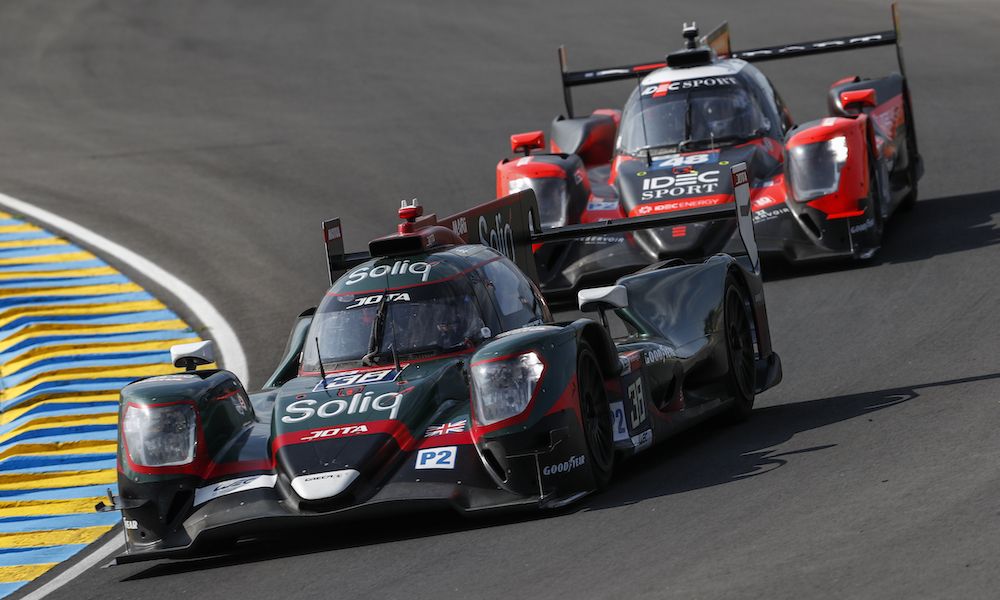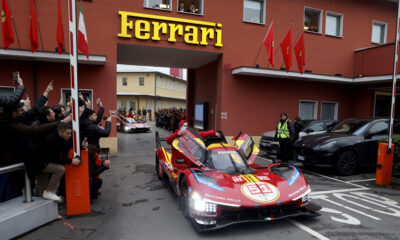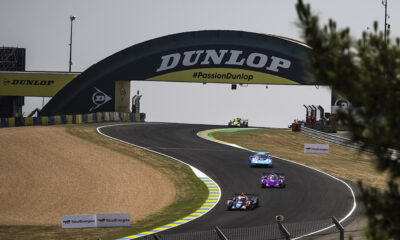Goodyear’s endurance program manager says the LMP2 tire supplier is anticipating some of its cars to potentially run “two laps a stint longer” in this year’s 24 Hours of Mans.
The American brand, which bases its LMP2 operations in Europe, has brought its ‘C’ specification medium-plus tire to Le Mans where it is supplying all 25 teams.
McGregor explained that Goodyear expects its tires to be handling longer stints than last year, based on the 50 kW (67 hp) reduction of LMP2 power output since the previous FIA World Endurance Championship seasons.
In 2020 Goodyear brought three tire compounds to Le Mans, with the medium ‘B’ spec proving popular among its five entries during the race.
Its sole supply for the upcoming 89th edition focuses on a harder tire, which is designed to contribute to an adequate pace gap between the Hypercar top class and LMP2.
“We don’t fully know yet because the track was in quite a poor condition on the test day, but it looks like the stint lengths in LMP2 could be two laps a stint longer, because of the change in engine performance,” McGregor told Sportscar365.
“They were on ten laps last year, but now some teams are thinking they can stretch out to a 12-lap stint.
“But already from where we were last year, we’re looking to start the race on triple stints. That’s six more laps on a set of tires compared to what we’ve previously done.
“We’ve got some good mileage in the test day. Some people did almost five stints worth of mileage on one set of tires.”
McGregor explained that while LMP2 cars have quintuple-stinted in the past, that strategy option should facilitate some of the defining moments of this weekend’s race.
“It’s not unseen to do five stints at Le Mans,” he said.
“Obviously five stints this year is going to be ten more laps than we’ve previously done on five stints, because of the fuel consumption.
“But I think towards the end of the race, when people are looking to get an advantage of saving a bit more time, that’s when you could see some things starting to happen.
“Especially the teams that have gone with a slightly more aggressive setup, all of a sudden trying to push it to five stints against the teams that have been a bit more sensible. That’s where the race is really going to unfold.
“Last year nobody was doing five stints. It was three or four. But years prior to that, yes. If you look at 2017 when JOTA won, there were quite a few teams pushing to do five.
“And then in 2014, it’s how JOTA won the race. It was in the last two quadruple stints, they chose to push it on that extra stint, which meant they jumped the other team to win.
“It’s those sorts of calls in those races that make you a hero or not.”
McGregor added that Friday’s closure of the public roads that form large parts of the Le Mans track will enable teams to push the tires harder right from the Saturday race start.
He explained that most of the teams that tried five-stint runs during last weekend’s official test day did so in the afternoon, once the rougher morning conditions had passed.
“I think we had four or five punctures from debris in the morning,” said McGregor.
“You could literally, like your road car, pull the nail out of the tire. Which is always the way here.
“But then in the afternoon when conditions started to improve, teams wanted to push the mileage to understand what the degradation is like and get as many miles on the tires as possible.
“The fact that they’re not going to open the roads again on Friday, with the practice sessions on Wednesday and Thursday, means the track will be in good conditions for the start of the race.
“Unless we have some random, huge shower on Friday. It means the teams will already start to push the tires more at the beginning.”
“Extremes” of Build-Up Rounds Proving Useful
Goodyear’s sole supply of LMP2 tires has already been in action at three WEC races and four ELMS rounds. The WEC events in particular, according to McGregor, produced “extremes” in track conditions that helped get the single tire spec in shape for Le Mans.
One of the major talking points early in the WEC season has been the process to create adequate separation or ‘stratification’ between Hypercar, which is slower than LMP1 used to be, and the LMP2 category which has been carried over from the old LMP1 era.
While the gap between HC and LMP2 at Le Mans is set to be closer than it was in the LMP1/LMP2 years, the long straights are enabling the top class to clear traffic. Toyota’s Kamui Kobayashi described the process as “simpler” at Le Mans than other WEC tracks.
Nonetheless, the smaller margin is making some LMP2 teams consider the prospect of fighting for an overall victory if the five Hypercar-class entrants, including two debuting LMHs each from Toyota and Glickenhaus, encounter reliability issues.
“We looked at the stratification at Spa, and you didn’t know how much Toyota were still finding their feet, how much performance they wanted to show,” said McGregor.
“It’s hard to truly understand what the gap is. At the same time, when you’re developing tires, unless you test at every single circuit it’s not an exact science that one tire will work one way at one performance delta, wherever you are.
“Depending on how green the track is and how much rubber has gone down before – what weather you’ve had in the build-up – it’s going to determine how the tire performs.
“That’s where we see some of the bigger differences.
“At Monza I probably would have expected a bit more performance out of the tires. But actually, just where the track was in terms of grip level, that was the circuit we struggled at more compared to Portimao and Spa.
“The biggest challenge for us is only having one dry specification to do the whole race.
“We’ve had all the different scenarios in the build-up, with Spa being cold and Portimao being ridiculously hot, and the variation of track surfaces that we have to work with across the GP circuits. [It] gives us a good array of what we need coming into this race.
“It’s been nice for us to have all these extremes that we’ve had. It was quite a challenge having to do a tire to do all of this as one spec. It’s quite refreshing.”

























